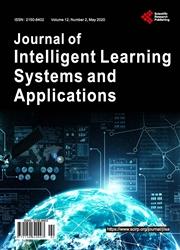Fusion of Model-Based and Data Driven Based Fault Diagnostic Methods for Railway Vehicle Suspension
引用次数: 3
Abstract
Transportation of freight and passengers by train is one of the oldest types of transport, and has now taken root in most of the developing countries especially in Africa. Recently, with the advent and development of high-speed trains, continuous monitoring of the railway vehicle suspension is of significant importance. For this reason, railway vehicles should be monitored continuously to avoid catastrophic events, ensure comfort, safety, and also improved performance while reducing life cycle costs. The suspension system is a very important part of the railway vehicle which supports the car-body and the bogie, isolates the forces generated by the track unevenness at the wheels and also controls the attitude of the car-body with respect to the track surface for ride comfort. Its reliability is directly related to the vehicle safety. The railway vehicle suspension often develops faults; worn springs and dampers in the primary and secondary suspension. To avoid a complete system failure, early detection of fault in the suspension of trains is of high importance. The main contribution of the research work is the prediction of faulty regimes of a railway vehicle suspension based on a hybrid model. The hybrid model framework is in four folds; first, modeling of vehicle suspension system to generate vertical acceleration of the railway vehicle, parameter estimation or identification was performed to obtain the nominal parameter values of the vehicle suspension system based on the measured data in the second fold, furthermore, a supervised machine learning model was built to predict faulty and healthy state of the suspension system components (damage scenarios) based on support vector machine (SVM) and lastly, the development of a new SVM model with the damage scenarios to predict faults on the test data. The level of degradation at which the spring and damper becomes faulty for both primary and secondary suspension system was determined. The spring and damper becomes faulty when the nominal values degrade by 50% and 40% and 30% and 40% for the secondary and primary suspension system respectively. The proposed model was able to predict faulty components with an accuracy of 0.844 for the primary and secondary suspension system.基于模型和数据驱动的轨道车辆悬架故障诊断方法融合
火车运输货物和旅客是最古老的运输方式之一,现在已在大多数发展中国家,特别是在非洲扎根。近年来,随着高速列车的出现和发展,对铁路车辆悬架的持续监测具有重要意义。因此,铁路车辆应该持续监控,以避免灾难性事件,确保舒适性,安全性,并在降低生命周期成本的同时提高性能。悬架系统是铁路车辆的重要组成部分,它支撑车体和转向架,隔离车轮上轨道不平度产生的力,并控制车体相对于轨道表面的姿态,以保证乘坐舒适性。其可靠性直接关系到车辆的安全。铁路车辆悬架常发生故障;主悬架和副悬架的弹簧和阻尼器磨损。为了避免系统的完全故障,列车悬挂故障的早期检测是非常重要的。研究工作的主要贡献是基于混合动力模型的轨道车辆悬架故障状态预测。混合模型框架分为四层;首先,对车辆悬架系统进行建模,生成轨道车辆的垂直加速度,根据第二次实测数据进行参数估计或识别,得到车辆悬架系统的标称参数值,然后,基于支持向量机(SVM)建立监督式机器学习模型,预测悬架系统部件的故障和健康状态(损伤场景);开发了一种新的支持向量机模型,结合损伤场景对试验数据进行故障预测。确定了主悬架系统和二级悬架系统的弹簧和阻尼器出现故障的退化程度。当二级和主悬架系统的标称值分别下降50%和40%、30%和40%时,弹簧和阻尼器就会出现故障。该模型对主、次悬架系统故障部件的预测精度为0.844。
本文章由计算机程序翻译,如有差异,请以英文原文为准。
求助全文
约1分钟内获得全文
求助全文

 求助内容:
求助内容: 应助结果提醒方式:
应助结果提醒方式:


